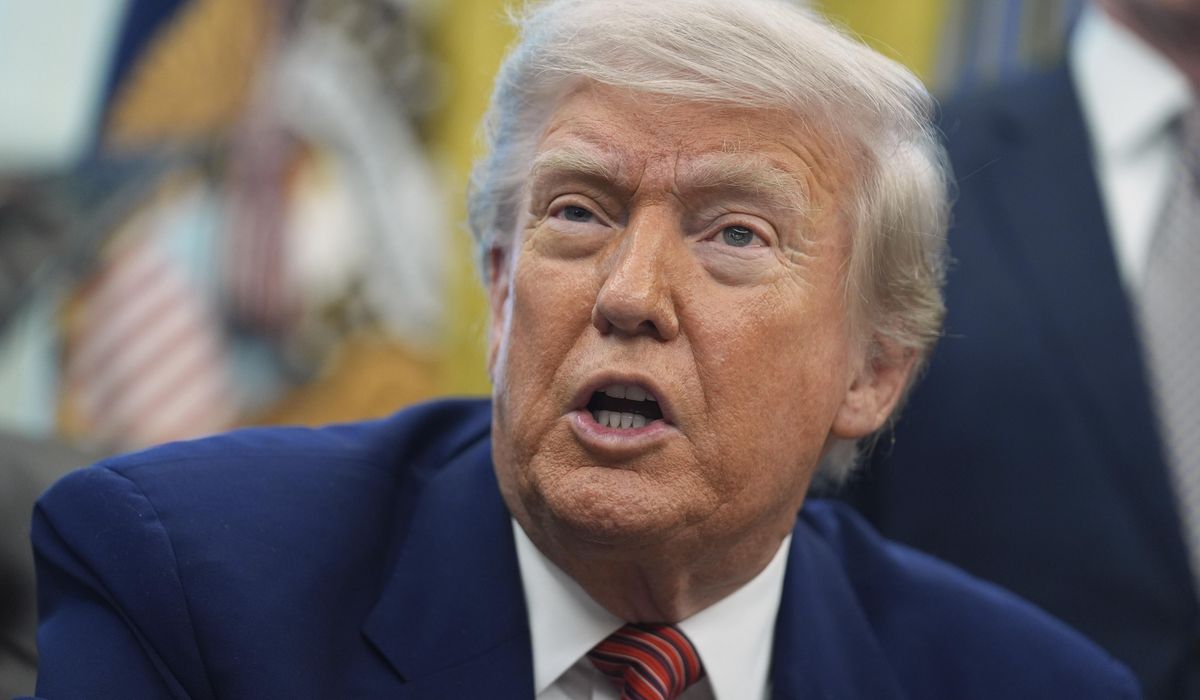


Federal courts have disrupted President Trump’s attempt to reshape global trade policy using tariffs, but the White House said Thursday it has more ammunition even if the rulings stand.
The legal action has come fast and furious since Wednesday, when the U.S. Court of International Trade ruled that Mr. Trump overstepped his powers with both his “Liberation Day” global levies and targeted tariffs aimed at Canada, China and Mexico over drug trafficking concerns.
An appeals court put the trade court’s judgment on hold, temporarily, while it takes stock of the case. But a second hammer blow fell from U.S. District Judge Rudolph Contreras in Washington, who also found the tariffs unlawful, adding to the legal headwinds confronting Mr. Trump.
Foreign trading partners said they hoped the adverse rulings would cool Mr. Trump’s zeal for tariffs and create space for a broader discussion of trade.
But White House officials urged the courts to butt out and leave the president with a free hand, decrying a “judicial tyranny” that’s thwarting Mr. Trump’s agenda.
The markets, which had reacted overnight with enthusiasm after the first court ruled against Mr. Trump, had cooled by Thursday afternoon, ending up slightly ahead after analysts said the president, even if he continues to lose in court, has other ways to impose tariffs.
“The markets are taking the ruling with a grain of salt,” James Mohs, an economist with the University of New Haven, told The Washington Times.
The trade court ruled that the 1970s-era law Mr. Trump was using, the International Economic Emergency Powers Act, doesn’t give the president the expansive powers he is claiming to “impose unlimited tariffs on goods from nearly every country in the world.”
The three-judge panel said even if the law could be read that broadly, the power to lay duties lies with Congress, and it cannot give that power away in full to the president. That, the judges said, would violate the nondelegation and major questions doctrines, which protect Congress’ ability to control big decisions in areas entrusted to it by the founders.
Judge Contreras reached largely similar conclusions in his ruling Thursday, deciding that the tariffs Mr. Trump imposed and tweaked in a handful of executive orders are unlawful.
“The International Economic Emergency Economic Powers Act does not authorize the president to impose the tariffs set forth in the above-listed orders,” he said.
He confined his ruling to the two family-run toy companies that sued in his court, while the trade court’s ruling was universal.
The Justice Department immediately appealed both rulings to different appeals courts and asked one, the U.S. Court of Appeals for the Federal Circuit, to put the trade court ruling on hold.
“The injunction threatens to unwind months of foreign policy decision-making and sensitive diplomatic negotiations,” Daniel Winik, a Justice Department lawyer, told the appeals court.
Hours later, the court issued what’s known as an “administrative stay,” which doesn’t reach the merits of the argument but puts the trade court ruling on hold while the judges take stock of the case.
That leaves the tariffs largely in place — for now.
White House officials said they would pursue the appeal, but they’re also pondering other ways to achieve their goals.
“We’re going to see what happens on appeal, and we’re very confident in our success there,” National Economic Council Director Kevin Hassett told Fox Business. “But the fact is, there are things, measures … that we could start right now. But we’re not planning to pursue those right now because we’re very, very confident that this is really incorrect.”
Deputy Chief of Staff Stephen Miller described the trade court’s ruling as “judicial tyranny.” Press secretary Karoline Leavitt complained of “judicial overreach.”
“There is a troubling and dangerous trend of unelected judges inserting themselves into the president’s decision-making process,” she said at the daily White House press briefing.
She predicted the case would eventually land at the Supreme Court, which she said would side with the president.
Ms. Leavitt said Mr. Trump has other tariff powers outside of the IEEPA that he can tap, including the Trade Expansion Act, which she said can be used if excessive imports are found to be a threat to U.S. national security.
Market analysts said that’s exactly what they expect.
“The tariff levels that we had yesterday are probably going to be the tariff levels that we have tomorrow, because there are so many different authorities the administration can reach into to put it back together,” Michael Zezas, Morgan Stanley’s global head of public policy strategy, told Bloomberg TV.
And Goldman Sachs, in a note to its clients, said the administration could replace the 10% tariffs with a “similar tariff of up to 15%” under a different U.S. statute.
The trade court noted that Mr. Trump already has that power, though the tariffs are limited to 150 days.
Foreign leaders remained hopeful that the court rulings would force a broader rethink of trade policy within the White House.
“China has made its position very clear: tariffs and trade wars have no winners. Protectionism benefits no one and is ultimately unpopular,” said Chinese Foreign Ministry spokeswoman Mao Ning.
Hong Kong Financial Secretary Paul Chan told reporters that the decision would “at least bring President Trump to reason.”
Brando Benifei, who chairs the European Parliament’s delegation to the United States, said the ruling signaled that Mr. Trump’s plans for a trade war are not sustainable.
“It creates further pressure on U.S. counterparts to actually be reasonable,” he told The New York Times.
• Stephen Dinan can be reached at sdinan@washingtontimes.com.
• Jeff Mordock can be reached at jmordock@washingtontimes.com.
